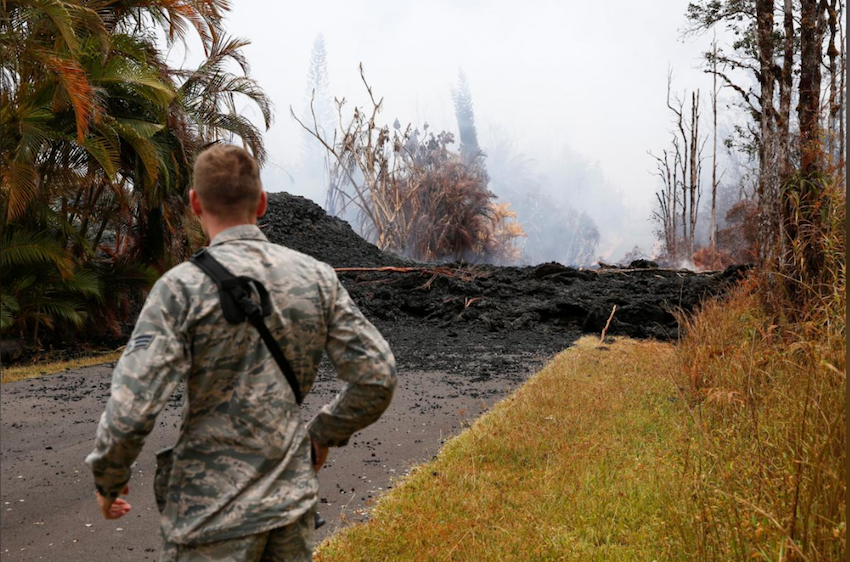Q&A: TU volcano expert on Hawaii eruption
Learn more about the Hawaii volcano from Towson University assistant professor of geosciences Dr. Wendy Nelson.
By Sean Welsh on May 14, 2018

There may not be any active volcanoes on the Towson University campus, but TU does have its own expert on the topic.
Dr. Wendy R. Nelson, an assistant professor of the geosciences, recently took a few moments to talk about how she has been following the volcanic eruption in Hawaii.
TU: How closely have you been monitoring what’s going on in Hawaii?
Dr. Nelson: I check in on the eruption activity at least once daily. The U.S. Geological Survey has a volcano observatory on the Big Island specifically for monitoring volcanic activity, mostly associated with Kilauea volcano. They frequently post updates on activity, including maps, photographs, aerial and ground videos, 3D models of the volcanic crater collapse, etc.
TU: One of your research areas involves studying volcanic activity.
Dr. Nelson: Yes, I study ancient volcanoes in various parts of the world, including the East African Rift as well as submarine volcanoes in the Western Pacific Ocean (south of Japan). Lava flows are some of the best recorders of ancient plate tectonics.
TU: Have you been able to use the current events in your classes?
Dr. Nelson: We talked about Hawaiian volcanism earlier this semester in my Igneous and Metamorphic Petrology class (GEOL 333). Therefore, when the Pu’u O’o lava lake drained and fissure eruptions began in early May, my students understood what was going on and now had a modern examples (and video footage!) of it happening.
TU: What makes the Hawaiian eruption so unique?
Dr. Nelson: Actually, I would not call the Hawaiian eruption unique. It is actually quite common for this type of volcano. However, the eruption style is different than a Mount St. Helens-type of volcano because there is a fundamental difference in how the lava is generated in those two different volcanoes. Hawaiian-style lavas are “runny” which makes it easy for them to flow through the subsurface and erupt along cracks, thereby generating fissure eruptions. Also, the “runny” lava allows gases to escape more easily, which means you will never get really explosive eruptions. Mount St. Helens-type lavas are “thick” in comparison. The gases do not escape readily, and it is ultimately the gas build-up that helps those volcanoes erupt explosively.
There is an exception to the non-explosive Hawaiian eruptions. If water is added to the lava, the water will flash boil, which releases a lot of energy and can generate an explosive eruption. This is something they are monitoring at Kilauea: the lava lake at the top of Kilauea volcano has dropped so much that groundwater may start to flow into the crater on top of the lava. If this happens, the rapid vaporization of water can blast rocks out of the crater, many of which may be quite large. It will also generate an ash cloud that can coat the land up to a few miles from the crater.
TU: Are there volcanoes in the Mid-Atlantic region?
Dr. Nelson: There are no active volcanoes in the Mid-Atlantic region. The region is what we call a “passive margin” meaning there are no active tectonic processes beyond erosion currently shaping east coast. However, there were volcanoes in the Mid-Atlantic in the past (hundreds of millions of years ago), and we can still see some of the ancient rocks formed during that time. Many of these are west of Baltimore near the Blue Ridge Mountains. Sometimes lavas don’t make it to the surface and instead cool inside the Earth. We have examples of this type of rock closer to Baltimore.